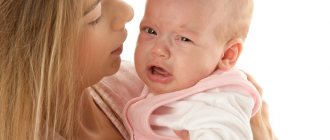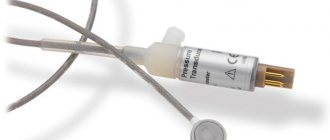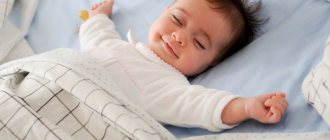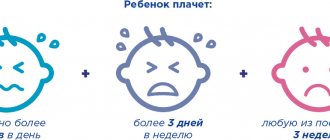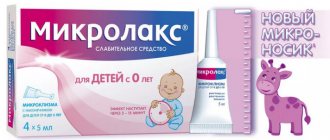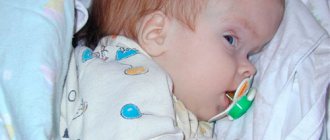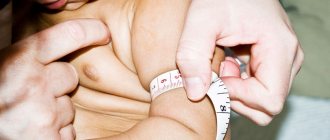Tenoten helps to calm down, restore mental balance and concentrate on an important matter in case of increased anxiety and emotional stress. Helps children maintain performance under high mental stress at school.
- Tenoten for children: who is it indicated for?
- Contraindications
- Tenoten for children: instructions for use
- Tenoten for children: price
Tenoten for children: pharmacology
The main use of the drug is associated with the need to reduce anxiety and calm the nervous system. Tenoten increases the tolerance of emotional stress to which a young body is exposed. At the same time, the drug does not have a muscle relaxant effect. Being a nootropic, it improves cerebral circulation, which is especially important during hypoxia.
Additionally, Tenoten reduces the risk of developing depressive conditions associated with nervous exhaustion. Increases attentiveness in class, as well as the ability to absorb large amounts of new information. The drug has a stress-protective effect.
Tenoten is based on antibodies to a brain-specific protein, which is known in neurology under the code S-100. Additional ingredients used to form tablets include:
- lactose monohydrate;
- magnesium stearate;
- microcrystalline cellulose.
The main substance is applied in the form of a water-alcohol solution to lactose monohydrate.
Tenoten for children: who is it indicated for?
Tenoten for children is intended for teenagers and preschoolers aged 3 years and older. Direct indications are:
- neuroses;
- hyperactivity;
- attention deficit disorder;
- severe anxiety in the presence of strangers;
- obvious irritability;
- nervous excitability.
A special course is intended for children planning to attend a preschool institution, or any other institution that does not involve being with a parent at the same time. Tenoten helps the child adapt to a new team, to the environment, to the rules and daily routine. Children in the first month of attending preschool may, due to nervous shock, begin to urinate in their pants. This is due to neurosis, due to which the child’s brain loses connection with the bladder sphincter. Evacuation begins without the child's knowledge. You can’t scold someone for dirty pants in such a situation. We need to help the baby get used to the new environment, which is radically different from home.
Neurologists recommend starting to take the drug a week before the first visit to a new environment. They continue the course, as a rule, during the first month of their stay in the team. If a child experiences bowel irregularities, morning tearfulness, or irritability, it makes sense to discuss additional therapy or dose adjustment of Tenoten with the attending physician.
For high school students who experience constant nervous tension due to upcoming exams, Tenoten for children is necessary to restore their performance. The drug will reduce anxiety, help improve rational thinking, and speed up memory processes.
A child who has suffered a minor traumatic brain injury is prescribed Tenoten as a safe nootropic that improves blood circulation. This allows you to reduce the risk of complications and prevent the manifestation of unwanted symptoms after a head injury. Serious head injuries accompanied by nausea, dizziness and loss of consciousness should be treated under the supervision of a specialist.
Material and methods
The study included 80 children, 56 boys and 24 girls aged from 3 years to 3 years 11 months with two types of consequences of perinatal damage to the nervous system (PPNS) - dysontogenetic and encephalopathic. The distribution of these children by age is presented in Table. 1. The ratio of boys and girls included in the study reflects the prevalence of this pathology by gender in the child population. The same applies to the identified variants of the consequences of perinatal damage to the nervous system at this age. The dysontogenetic variant with milder neurological and dysphasic manifestations is much more common when examining children of early preschool age than the encephalopathic (complicated) variant with pronounced cerebrasthenic or hyperkinetic disorders (see Table 1).
Table 1. Distribution of examined children by age
According to our data, the reasons contributing to PPNS, and subsequently to motor and speech disorders, include pathological conditions during pregnancy (90%): toxicosis of the first half of pregnancy (52.3%), threat of miscarriage (27.7%), nephropathy (7.5%), anemia (12.5%). Pathology during childbirth was identified in 92.5% of cases: rapid labor was most often observed - 11.3%, prolonged labor - 3.8%. During the neonatal period in the examined group the following were observed: malnutrition - 7.5%, postmaturity - 5%. There was a history of prematurity in 12.5% of children. Diagnoses related to the perinatal period were as follows: “hypoxic-ischemic encephalopathy” - in 80% of children, “motor disorder syndrome” - in 37.5% (in the form of muscular dystonia with hypotonicity or hypertonicity). In 17.5% of cases, a syndrome of increased neuro-reflex excitability was detected, in 6.3% - hypertensive-hydrocephalic syndrome. In combination with the noted manifestations, 12.5% of children had a delay in early psychomotor development.
One of the main and significant features of the children’s condition, which parents paid attention to, was motor awkwardness (92.5%). Compared to their peers, the children lagged behind in motor development; awkwardness and lack of coordination of movements were noted, especially noticeable in physical education and rhythm lessons. The nature of the movements was slow and irregular. Impairments in fine motor skills of the hands were detected when drawing, modeling from plasticine, assembling construction sets, and laying out small parts. Parents often noted in their children increased motor activity, restlessness, signs of infantilism (inconsistency of mental reactions with age), as well as emotional and behavioral disorders. Such children were also distinguished by dysarthria. The distribution of other disorders in the examined groups of children is shown in Table. 2.
Table 2. Frequency of disturbances in the state and behavior of children of different groups with motor disorders and dysarthria
As can be seen from table. 2, against the background of delayed motor development, in addition to complaints about awkward movements (92.5%), in most children, parents noticed certain difficulties in pronouncing words (85.2%), the severity of which correlated with motor dysfunction. Complaints of restlessness and hyperactivity were quite common (36.3%). At the same time, signs of ADHD were almost twice as common in the dysontogenetic variant of the consequences of PPNS. Moodiness and disobedience were less common (25%). Cerebrasthenic symptoms: physical and, to a greater extent, mental exhaustion were 3 times more common in the group of children with the encephalopathic variant of the consequences of PPNS - 13 people (38.2%), while anxiety and fears occurred with almost the same frequency (6, 5 and 5.9%). The difficulty of learning during educational games was noted by parents of children in both groups, but more than half in the group with a predominantly encephalopathic variant (18 children, 52.9%). Neurological symptoms such as tics and enuresis were also more common in this group (29.4 and 15.2%, respectively).
As for the neurological status, in the group of children with the dysontogenetic variant, changes were noted in the coordination sphere in the form of staggering with deviation from the line, excessive movements, auxiliary hand positions, instability in the Romberg test, as well as misses when performing the finger-nose test, hypermetry and asynchrony of movements, synkinesis of facial muscles when performing a test for diadochokinesis. Disturbances from the cranial nerves were represented by weakness of convergence, bilateral under-extension of the eyeballs (oculomotor nerves III, IV, VI). In children with the encephalopathic variant, changes in muscle tone in the extremities of the hypotonia, dystonia, or plastic type hypertension prevailed; tendon reflexes (moderate increase or decrease) according to hemitype; local hyperkinesis (tics), urination disorders. In addition, a violation of cranial innervation was represented by elements of horizontal nystagmus and convergent strabismus (oculomotor nerves III, IV, VI); facial asymmetry (smoothness of the right or left nasolabial fold) (facial nerve VII); deviation of the tongue (glossopharyngeal nerve XII). The frequency of identified symptoms is summarized in Table. 3.
Table 3. Frequency of neurological symptoms in groups of examined children
Our study confirmed the existing position in child psychiatry and neurology that overcoming speech disorders in dysarthria is impossible without examination and development of the child’s motor sphere. The level of development of children's speech depends on the degree of development of fine movements of the fingers. In children with dysarthria, the kinesthetic and kinetic basis of movements is insufficiently developed. Based on this, the development of the motor system of children is a factor stimulating the development of speech. The movements of the fingers are of particular importance, as they influence the development of the child’s higher nervous activity. Fine motor skills are motor activities that are determined by the coordinated work of the small muscles of the hand and eye. Based on the objectives, the methodology for studying motor praxis included: 1) studying the state of general motor skills; 2) study of the state of voluntary motor skills of the fingers; 3) study of articulatory praxis.
In each section of the methodology, the result is assessed in points: from 4 (when the task is completed correctly and independently) to 0 points (when the task is not completed or is performed with numerous errors without criticism of them).
Our results indicate that in children with a dysontogenetic variant of the consequences of PPNS, the severity of symptoms of delayed general motor development was less significant. This also applies to indicators of general voluntary motor skills (the average score is 2.56, and in the group with the encephalopathic variant - 1.87) and to the performance of the Head test - the average score in this study in the group with the dysontogenetic variant was 2.25, and in the group with encephalopathic - 1.63 points.
Children in both groups showed loss of balance, deviations to the sides, slowness and imprecision of movements. However, coordination of movements was worse in the group with the encephalopathic variant of PPNS - when completing tasks, they scored less than half of the possible points (46.8%), difficulty was noted in dynamic tests - they had difficulty catching the ball and passed it to the researcher inaccurately. The same results were noted when studying visuospatial organization: in the Head test in the group with the encephalopathic variant, echopraxia occurred during the first task and persisted during subsequent tasks; some children did not correct errors on repeated tests; the average score of completed tasks was 40.8%. Indicators of general motor skills assessed in children with the dysontogenetic variant were slightly higher: they were more accurate in performing coordination tests (64% of possible) and when repeating movements after the researcher in the Head test (56.3%).
As noted above, fine motor skills are motor activity that is determined by the coordinated work of the small muscles of the hand and eyes, and the level of speech development in children depends on the degree of development of fine movements of the fingers. When we studied kinesthetic praxis (Table 4), children with dysontogenetic variant of disorders coped with tasks significantly better, their movements with their hands were more accurate and coordinated (53.3% of possible points). Kinetic praxis tasks were completed after prompting and instructions from the researcher (51.3% of the maximum possible score). In the group with the encephalopathic variant, errors and inaccuracies were noted significantly more often, which were not corrected even after comments (38.3% of completed tasks), synkinesis was observed when performing tasks on kinetic praxis, the rate of movement of the fingers was slow, more often these children performed tasks with with the help of an adult or not at all (31.3%).
Table 4. State of fine motor skills of the hand in the examined children, average score
In order to assess the state of articulatory and facial motor skills of children (Table 5), the child is asked to hold the organs of articulation in the desired position for 5-7 s. 20 exercises with functional load are used: “fence” - “window” - “bridge” - “sail” - “shovel”, “tasty jam”, etc. The accuracy of the movements was taken into account (exact execution, approximate, search for articulation, replacement one movement to another), the duration of holding the articulatory posture (sufficient, rapid exhaustion), symmetry, the presence of synkinesis, hyperkinesis, salivation. More correct and accurate performance of the exercises was noted in the group of children with the dysontogenetic variant - their average score when studying kinetic oral praxis was 2.36 (59% of the maximum possible). Children with the encephalopathic variant of developmental delay were more likely to experience rapid exhaustion, slow response to performing exercises, and inaccuracies in their execution. They quickly lost interest in the lesson and showed reactions of protest and disobedience. Muscle tone and mobility of the lips and tongue were assessed by the accuracy of task performance, the presence of violations of the tone of the labial muscles (hypertonicity, hypotonia, dystonia; salivation, which increases with functional load, deviation of the tongue). The children had difficulty completing the task; they completed it only with the help of an adult; their movements were slow and uncertain. Tightness of the lips and limited mobility were noted. It should be noted that in children with a severe violation of the muscle tone of the tongue, constant salivation, hyperkinesis, blue discoloration of the tip of the tongue and its deviation, other neurological symptoms were most often detected, which were described earlier. In the vast majority of cases, such significant disorders were observed in the group of children with the encephalopathic variant of the consequences of PPNS (84% of all children). In table Figure 5 shows differences in the severity of the tone of the lips and tongue. Children with the dysontogenetic form were able to score 67% of the maximum possible score, while children with the other form were able to score only 46.8%.
Table 5. State of articulatory motor skills in the examined children, average score
To assess the effectiveness of the medication and speech therapy measures, all children were divided into the main (50 children) and control (30 children) groups. In the main group there were 30 children with the dysontogenetic variant and 20 with the encephalopathic variant, in the control group there were 16 and 14, respectively.
In the main group, a combination of standard speech therapy techniques was used with a course of treatment with the drug tenoten for children according to the scheme: 1 tablet 3 times a day for 12 weeks. In the control group, only speech therapy classes were conducted 2 times a week (duration of classes - no more than 15 minutes). When carrying out correctional speech therapy work, the following speech therapy methods were used: differentiated speech therapy massage, passive and active articulatory gymnastics (to correct sound pronunciation) and a technique aimed at improving fine motor skills of the hands.
In table Figure 6 reflects the dynamics of the state of general motor skills, fine motor skills of the hands and articulatory motor skills in children of the examined groups.
Table 6. Dynamics of the state of general motor skills, fine motor skills of the hands and articulatory motor skills in the examined children, average score and % of the maximum Note.* - p<0.05; ** — p<0.01.
When comparing the results of tenoten therapy for children in combination with speech therapy sessions in the main group with the results of speech therapy interventions only in the control group, the following conclusions can be drawn.
Indicators of general motor skills and spatial coordination improved in the main group of children with dysontogenetic and encephalopathic variants of the consequences of PPNS, especially in the Head test, where the improvement became significant - from an average score of 2.25 to 2.89 ( p
<0.05) and from 1.63 to 1.84 points (
p
<0.05). Children completed tasks correctly and independently corrected mistakes; Echopraxia occurred during the first task, but did not recur during subsequent tasks. In the control group, indicators of general motor skills (according to the Head test) also improved, but did not reach significance (the average score increased from 2.25 to 2.45 and from 1.63 to 1.71 for two different options); the children remained unstable in balance and vagueness in performing visual coordination tests (Fig. 1).
Rice.
1. Dynamics of indicators of general motor skills and spatial coordination (% of the maximum score). * — p<0.05; **— p<0.01. According to the design of the study, speech therapy sessions were conducted with children in the main and control groups 2 times a week, which used exercises aimed at improving fine motor skills of the fingers and improving articulatory motor skills. Therefore, it was quite natural to expect positive results on these indicators. Indeed, in children of both groups, the average score in the study of fine motor skills of the hands, both in terms of kinesthetic and kinetic praxis, increased, the pace of completing tasks increased, and movements became more accurate. In the main group, upon objective assessment, improvement in results with a greater degree of reliability occurred in children with a dysontogenetic variant of the consequences of PPNS: in kinesthetic (from 2.13 average score to 3.15; p
<0.01) and kinetic praxis (from 2.05 average score to 3.43;
p
<0.01);
in the group with the encephalopathic variant, the reliability of the improvement in indicators was slightly lower (from 1.51 to 2.15 points, respectively; and from 1.25 to 2.35 points; p
< 05). In the control group, some improvement was also observed mainly in children with dysontogenetic form, but it did not achieve reliable results. According to the specialists who conducted speech therapy sessions, children who took tenoten for children had a noticeable improvement in behavior, objectively reduced symptoms of increased excitability, hyperactivity, restlessness, and improved contact when performing tasks. Parents also noted such changes in the behavior of children; at home, after taking the drug, children became calmer, more obedient, and cases of moodiness and disobedience decreased (Fig. 2, 3).
Rice. 2. Dynamics of indicators of fine motor skills of the hands (% of the maximum score). * — p<0.05; **— p<0.01.
Rice.
3. Dynamics of articulatory motor skills indicators (% of the maximum score). * — p<0.05; **— p<0.01. Speech therapy classes, which included differentiated speech therapy massage, as well as passive and active articulatory gymnastics, objectively improved the results of the repeated study, especially the average score for kinetic oral praxis in children of the main group with a dysontogenetic variant of the disorder increased significantly - from 2.36 to 3.65 points ( R
<0.01): the execution of movements became more accurate, the duration of holding the articulatory pose and its symmetry increased, the number of synkinesis and hyperkinesis decreased.
Muscle tone and lip mobility in children of the main and control groups during articulatory gymnastics improved equally with the dysontogenetic and encephalopathic variant of disorders - from 1.63 to 2.28 ( p
<0.05) in the main group and from 1.63 to 2.24 average score (
p
<0.05), and a significant improvement in children with encephalopathic variant disorders was noted only when using the drug tenoten for children - from 1.23 to 1.75 average score (
p
<0.05).
Thus, a common speech disorder in preschool children who have undergone PPNS is dysarthria. It is often combined with delayed motor functions in the form of a slow pace of movements, awkward, imprecise and undifferentiated movements in the area of both gross and fine motor skills of the hands and rapid fatigue. Severe impairments of motor functions in dysarthria are quite difficult to correct and negatively affect the formation of phonemic and lexico-grammatical aspects of speech, complicating the process of schooling for children. Timely correction of speech development disorders is a necessary condition for the psychological readiness of children to study at school and creates the prerequisites for the earliest social adaptation of preschoolers with speech disorders.
Based on the data obtained, the following conclusions can be drawn:
1. In children who have suffered PPNS of various etiologies, in early preschool age (3-4 years), delayed motor development and speech development disorders (dysarthria) are detected.
2. The severity of dysarthria depends on the severity of motor disorders: they are milder in children with the dysontogenetic variant of the consequences of PPNS in comparison with the group of children with the encephalopathic variant.
3. To correct speech disorders, it is necessary to use techniques that stimulate the development of gross motor skills, spatial coordination and fine motor skills of the hands.
4. The inclusion of the drug tenoten for children in a comprehensive speech therapy program promotes significantly more successful development of both gross motor skills and spatial coordination, as well as fine motor skills of the child’s hands.
5. In children treated with tenoten for children, signs of dysarthria decreased in comparison with children who received only speech therapy assistance, and in the group with the dysontogenetic variant of PPNS these changes were more pronounced.
6. Along with improving motor and speech functions, a course of tenoten for children helps to normalize the child’s behavior, reduce hyperactivity, excitability, restlessness, and increase productive contact. According to parents, at home, after taking the drug, children became calmer and more obedient.
Tenoten for children: instructions for use
Each tablet contains a score in the center. But it is not applied to divide the dose in half. The tablets are taken orally. They are not intended to be washed down with water. Each dose must be dissolved on the tongue. If the child’s age does not allow him to dissolve medications, which is important for children under 4 years of age and those who have disorders of the pharyngeal muscles, you can dissolve the tablet in half a glass of drinking water, and give the solution to the patient to drink.
As a preventive measure for nervous disorders, especially during the period of preparation for adaptation associated with visiting children's institutions or with any other radical change of environment, 1-2 tablets per day are prescribed.
If neuralgia has already developed, take 1 tablet three times a day. The course should not last less than two months. The recommended period is three months. After which you should see a doctor, who, based on the patient’s condition, will decide to extend therapy for another 3 months or discontinue the drug. Prolongation involves reducing the dose to 2 tablets per day for a period of up to 6 months of therapy.
You can repeat the course after a break, which should be no shorter than a month.
When a child has attention deficit disorder, give 1 tablet in the morning and before bed for 2 months. If after 4 months of any therapy there is no obvious improvement in the condition, you should stop taking Tenoten and consult a specialist for advice.
High school students are recommended to take the drug a month before the start of exam time. One tablet twice a day is the optimal dose to help you concentrate on your studies, reduce anxiety and gain confidence in your abilities. There is no need to stop admission until the last exam is completed. The total duration of the course is in this case two months: a month before the start of the session and the period during the entire examination month.
Interview with a neurologist
A neurologist is one of the main specialists for children from birth. For the first time, your baby meets with a pediatric neurologist in the maternity hospital, then routine examinations of this doctor are carried out every month, at three months, at six months, at 9 months (if indicated), and a year. We talked with the pediatric neurologist of the EuroMed Clinic, Natalya Petrovna Isaenko, about why a child is so often shown to a specialist, what are the most common neurological diseases found in children, and what needs to be done to ensure that your child grows up healthy and calm.
— Natalya Petrovna, what does a neurologist pay attention to during routine examinations of children?
— First of all, a neurologist identifies gross congenital anomalies. Next, we look at how the child’s pre-speech, motor, and emotional development progresses.
At each age, a child must have certain skills. Parents, unlike a neurologist, most often cannot objectively assess how their child’s development fits into age norms.
— But all children are different, and their development may not correspond to tables and established frameworks?
- Yes, this happens. Here you need to approach it very individually. Indeed, despite the fact that we are guided by existing norms, we have certain tables, written diagrams of what a child should do at what age, there is the possibility of deviations from them, and this is not scary. Some children may begin to perform certain actions a little earlier, others a little later. Much depends on the conditions in which the child lives, what the parents do in relation to the child, etc.
But this is why it is important to consult a neurologist in order to professionally assess whether the child is developing normally or whether there are frightening moments that may indicate certain health problems.
— Is it normal for a small child to cry often?
— Recently, it has been believed that a healthy child, when he is well-fed and has enough day and night sleep, should not cry. If a child cries frequently and without reason, then there is a problem. These could be headaches, neck problems (subluxations, pinching), neurological problems. In the first months of life, there are problems with the gastrointestinal tract: colic, increased gas production, etc. In connection with this, there may be crying during meals, refusal of the breast, or refusal of the bottle. During eating, intestinal motility increases, causing the child to experience discomfort.
Young children are usually very weather-sensitive and react to the weather - this can also be a reason for crying.
It seems to me that many children cry because they are bored, they so require parental attention. Nowadays, children experience psychological acceleration and, accordingly, they require more attention. This is usually clearly visible. Many parents themselves provoke this reinforcement: the child cried, the mother took him in her arms, rocked him, and put him to her chest. Of course, a baby in his mother’s arms and, even more so, at his breast feels good, and he will cry again and again, demanding repetition. There is no need to put him to the breast every time the baby cries. It’s better to try to switch it up: distract it, rattle it with a rattle, stroke it...
Another reason for crying is overwork. Parents often do not believe that a baby can be overtired; they do not understand why. Babies have an immature nervous system, plus they receive a huge amount of new information and impressions every day - for them, everything in the world is new and unfamiliar! That’s why proper sleep is so important, when a child can take a break from impressions.
If a child screams before going to bed, sleeps little, is nervous, wakes up often, you need to change the schedule, improve sleep, and monitor the quality of sleep.
— When we talk about proper sleep, what do we mean, how should a child sleep?
— For very young children, the norm is to sleep at least an hour and a half during the day, and six hours in a row at night. During the adaptation period, in the first months of life, the baby may wake up more often at night, but still, the intervals should be at least 3 hours. Dreams of 30–40 minutes are not enough; the child does not have enough time to rest. The following point is important here: the child’s sleep phase is just these 30-40 minutes. But the child must be able to move from phase to phase independently. What happens in practice? The child fussed, opened his eyes, the mother immediately took him in her arms and began to feed him. He gets used to it and no longer falls asleep on his own. Therefore, it is important to teach the child to move from phase to phase without waking up: do not touch him if he wakes up, do not disturb him; if he cried or became capricious, pump him up, stroke him, but try to ensure that the child continues to sleep without interruption for food.
For older children who sleep once a day, the duration of daytime sleep should be 2-3 hours. If you sleep more, that's good.
To improve sleep, a routine is important. I recommend directly writing down in a notebook (or in an application on a smartphone) how long the child sleeps, the time he fell asleep and woke up, when he screams before bed, what his mood is after sleep... This way we can track the quantity and quality of sleep. Look at which days the child slept well, fell asleep easily, and focus on the routine of that day.
— One of the common diagnoses that many children are given in the maternity hospital is “neurogenic torticollis.” How serious is this problem?
— Neurogenic torticollis – asymmetry of muscle tone. A child is often born with asymmetry of muscle tone. A small child does not yet have voluntary movements; they are chaotic. And at the moment of relaxation, sleep, the child is drawn to where the tone is increased. That is, the child lies with a certain turn of the head. If this problem is not addressed and corrected, deformation of the neck and skull occurs. The child constantly looks in one direction, lies on one side, as a result the head flattens and its shape changes.
You can work with this, the main thing is to practice. What is done to correct torticollis and its consequences? We change the position, shift the child so that he lies on different sides alternately, and not on one, on his back. Place it on your stomach. Also, therapeutic exercises, massage, and a swimming pool are recommended for the correction of torticollis.
Torticollis returns to normal between 3 and 6 months of a child’s life. During this period, the child becomes more active, turns his head and arms, begins to roll over, tries to crawl, and sit down.
It is important not to confuse neurogenic torticollis, which is treated by neurologists, with congenital muscular torticollis, a severe pathology treated by orthopedic doctors.
— Are headaches in children a reason to consult a neurologist?
Yes, definitely. Children under 5-6 years old should not have headaches - they are not yet mature for this. In young children, headaches can be caused by somatic reasons: parasitosis, anemia, allergies, some kind of gastrointestinal problems...
In older children, headaches can be caused by problems in the spine of the neck. During puberty, various autonomic dysfunctions are often encountered. This is a common problem among teenagers.
In any case, it is necessary to be examined. There is a good chance that we will not find anything, and the headaches will go away on their own over time. But this can also be a symptom of some serious diseases that should not be left to chance.
— Is nocturnal enuresis (urinary incontinence) common? When do we talk about this diagnosis?
- Yes, this is also a common disease. Enuresis is diagnosed after 3-4 years.
If we talk about developmental norms, by the age of one and a half years a child should learn not to urinate at night. A modern child spends some time in disposable diapers. Then they are removed. At first the nights will be “wet”. But by the age of two, “dry nights” should already have formed.
After this, some time passes - and the child begins to urinate at night again, say, at 4 years old. This is secondary enuresis.
If the diaper is removed, and the child continues to urinate at night, this is primary enuresis.
There are many reasons for enuresis: infectious diseases, developmental defects, dysfunction of the genitourinary system, immaturity of the nervous system, stress, neuroses, etc. In any case, this problem cannot be ignored, but you need to contact a neurologist as soon as possible for correction of this disease.
— Young children have seizures when their temperature rises. How dangerous is this?
Febrile seizures (that is, seizures with an increase in body temperature) are a paradoxical reaction of the nervous system, the cerebral cortex, to such an irritant as high temperature. Against this background there is a splash. Febrile seizures may occur just once, or may recur with each episode of fever. Most often, they occur in emotional and active children. No special treatment is required, the main thing is to not allow the body temperature to rise above 37.5 ° C, to bring it down immediately with antipyretic drugs so that episodes of seizures do not recur. If necessary, the neurologist will recommend sedatives. Such children are observed by a neurologist; it is recommended to see a doctor once every six months.
— Could febrile seizures be a sign of incipient epilepsy?
As a rule, febrile convulsions do not lead to epilepsy. There are isolated cases when seizures may actually be the onset of epilepsy. Therefore, in any case, it is necessary to show the child to a neurologist so that the doctor can see in what direction this is developing.
— Is epilepsy common in general?
— Yes, epilepsy is a common disease. We, in Novosibirsk, even have a special center where epileptologists work - this is a very narrow specialization in neurology. When we confirm epilepsy in a child, I usually refer the patient to a specialized center for observation. This way, they will be able to help the baby as efficiently as possible, choose the right medications and prescribe the correct treatment.
— What symptoms are important for parents to pay attention to so as not to miss the onset of epilepsy in a child?
- As a rule, when an attack occurs, it is clearly visible. The child experiences convulsive twitching, the corner of his mouth twitches, he may pull muscles, saliva flows, he may foam at the mouth, and he may wet himself. But it happens that during an attack, a child simply freezes and, for example, rubs his hands or makes chewing movements for some time. And then everything goes away. After an attack, headache, nausea, and loss of coordination and speech may occur.
Sometimes the first signs of epilepsy appear even before an attack. For example, a child twitches in his sleep. Or he simply changes his usual behavior, becomes obsessive, whiny, asks the same questions in a circle, etc. This is due to the neurological changes that occur with epilepsy.
Thus, if you notice changes in the child’s behavior, he behaves unusually, strangely, be sure to show the child to a neurologist!
If possible, I recommend filming the attack - this will make it much easier for the doctor to understand what is happening to the child.
— Are there sedatives that can be given to children?
- Hardly ever. Available medications can only be prescribed and given in hospitals. This is not practiced in outpatient treatment in neurological pediatrics.
In case of increased excitability and emotionality of the child, I usually suggest starting from afar - establishing a daily routine, giving the child the opportunity to actively move and fully rest, walk in the fresh air, etc.
All medications (vascular, nootropics, etc.) are prescribed strictly according to indications and cannot be taken without a doctor’s recommendation. The consequences of uncontrolled medication use can be neurological and behavioral problems in the future: hyperactivity, disinhibition, restlessness, attention deficit hyperactivity disorder (ADHD).
— How common is attention deficit hyperactivity disorder (ADHD) in children?
“Nowadays this diagnosis is made very often. Although, it seems to me, we often attribute to ADHD something that is not it: the characteristics of the child’s temperament and character, his activity or even pedagogical neglect...
There are many pathological hyperactivity, but there are still more stories with problems in the family and in the interaction of parents with the child.
— Another common disease is nervous tics. How are they treated?
— Yes, tics are very common. We treat with medication and, most importantly, with normalization of the regimen. For a “ticking” child, proper sleep, rest, and minimizing television, telephone, and computer are very important. It is very useful to send such children to sports sections. As a rule, children suffering from nervous tics are very emotional, temperamental, read a lot and sit at the computer. They are experiencing emotional and information overload. And the nervous system relieves tension, manifesting itself in tics.
— Speaking of information overload, how do you feel about early development, which is so popular now?
- Badly. Any neurologist, I think, will agree with me. If a child is given a load that is inadequate for his age and development, this will result in quite serious problems in the future, including psychiatric disorders. A child doesn’t need all this early reading from the age of two, English from three and mathematics from five. A child should explore the world in a calm manner; it is important to stimulate his cognitive activity, but there is no need to stuff him with a huge amount of knowledge beyond his age.
— What examinations exist to diagnose neurological diseases?
— Electroencephalogram (EEG). Invented and created to record epi-activity - to confirm or exclude epilepsy, this is the main direction of this examination.
I also send children with speech and mental disorders to an EEG to see how well all cortical rhythms are formed - according to age or not. This is adjusted with age, over time. Classes with neuropsychologists, defectologists, and the Tomatis method (a program for neurosensory stimulation) also help.
Magnetic resonance imaging (MRI). This is one of the most informative surveys.
We definitely send you for an MRI to understand the cause of the headaches, especially if the child complains of a headache when moving, when he starts jumping, running, or actively moving.
MRI is also informative for epilepsy, the attacks of which cannot be treated. Then we look at the MRI to see if there is a vascular malformation (deviation from normal development) or other vascular defect. This may be the cause of the attacks, and the problem can be treated with surgery. As a rule, after the operation, the child’s seizures stop.
MRI allows you to see the structure of the brain and blood vessels, assess the condition of the structure, the presence of cysts, etc.
Computed tomography (CT). As a rule, a CT scan is prescribed after an injury to look for the presence of blood in the injured area.
Ultrasound of neck vessels. Headaches, disinhibition, attention deficit, speech delays can be caused by impaired blood flow through the vessels. Ultrasound makes it possible to diagnose this, as well as to see anatomical defects (C-shaped, S-shaped course of blood vessels), anatomically malformed vessels, improper discharge of vessels into the spinal column, and narrowing of blood vessels.
Neurosonography (NSG) – ultrasound of the brain. It is mandatory recommended as a screening (preventive examination) for all newborns. NSG shows the structures of the brain, how all spheres are formed, the cavity system, ventricles, grooves, and the presence of fluid. In parallel with the NSG, Doppler measurements are performed to look at the blood flow of the vessels.
NSG is performed in the maternity hospital for children after complicated births; absolutely everyone is prescribed NSG per month. NSG can show gross violations that need to be corrected as early as possible in order to minimize their impact on the baby’s development. In the first months of life, many developmental anomalies do not appear; until about 3-4 months they are well compensated, and then the child begins to lag behind in motor and mental development. That is why NSG must be performed without fail, even if outwardly the child looks absolutely normal.
